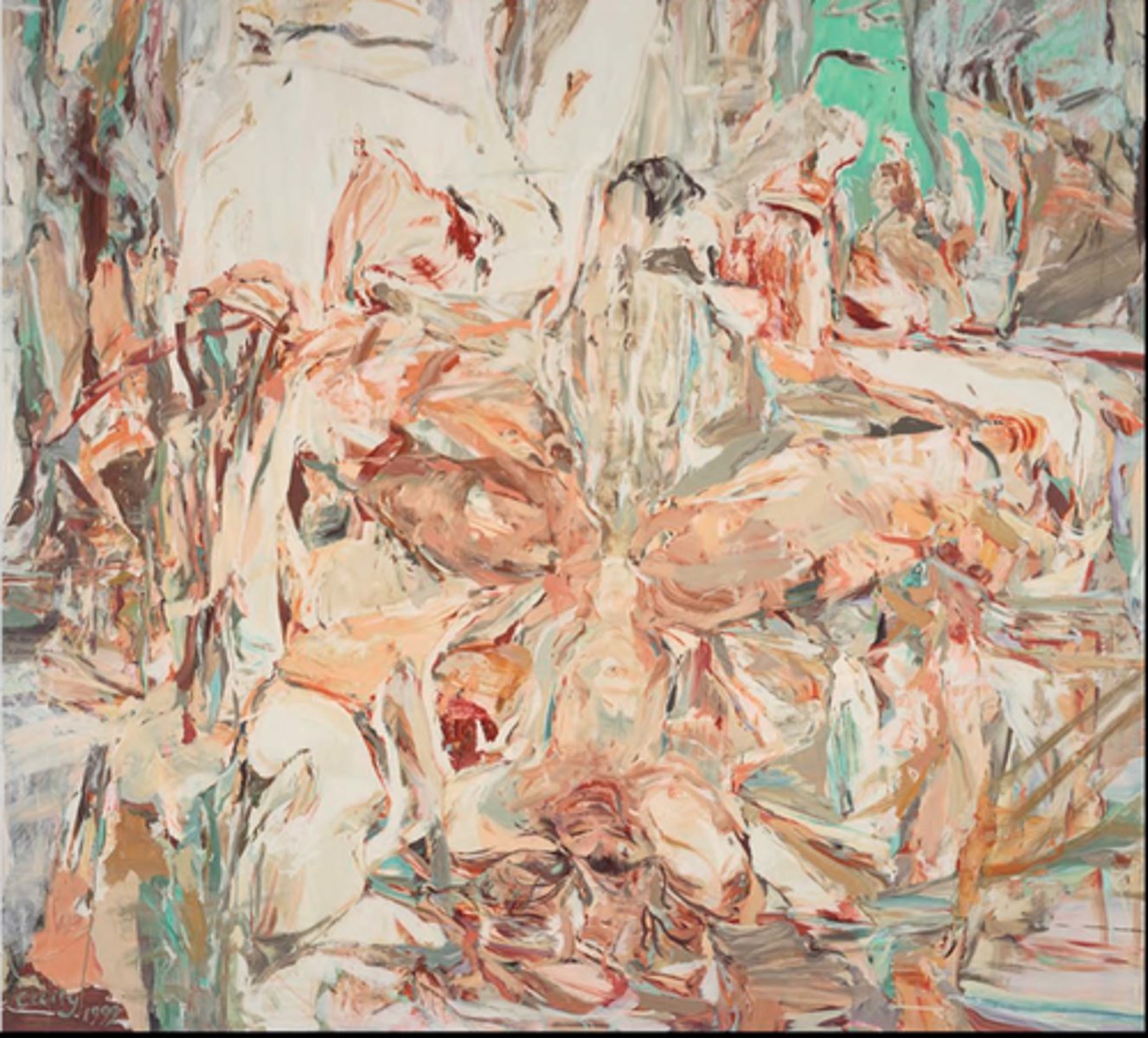Final Exam Contemporary Art- Pictures
1/23
There's no tags or description
Looks like no tags are added yet.
Name | Mastery | Learn | Test | Matching | Spaced |
|---|
No study sessions yet.
24 Terms
Peter Halley, Two Cells with Circulating Conduit, 1985, Acrylic, Day-Glo acrylic, and Roll-a-Tex on canvas
Issue(s): Neo-Geo; geometric forms and colors represent the organization of society, the dissemination of information, and the flow of movement in technology and society in the modern world through cells and conduits; representation of Foucault's ideas related to the panopticon - social order is achieved through surveillance, the internalized knowledge of surveillance, and internalized power dynamics; addresses that people now experience the world through simulacra and the hyperreal more than they experience the world through physical reality; the meaning of an artwork since the late twentieth-century comes from how society interprets the work

Maya Lin, Vietnam Veterans Memorial,1984, black granite, granite, two walls each 246' rising to an apex of 10' 1'
Issue(s): Memorial - Lin's memorial is distinct from traditional memorial - it rejects the heroic statues of idealized men and women - Draws on Minimalism, Conceptual Art, Land Art
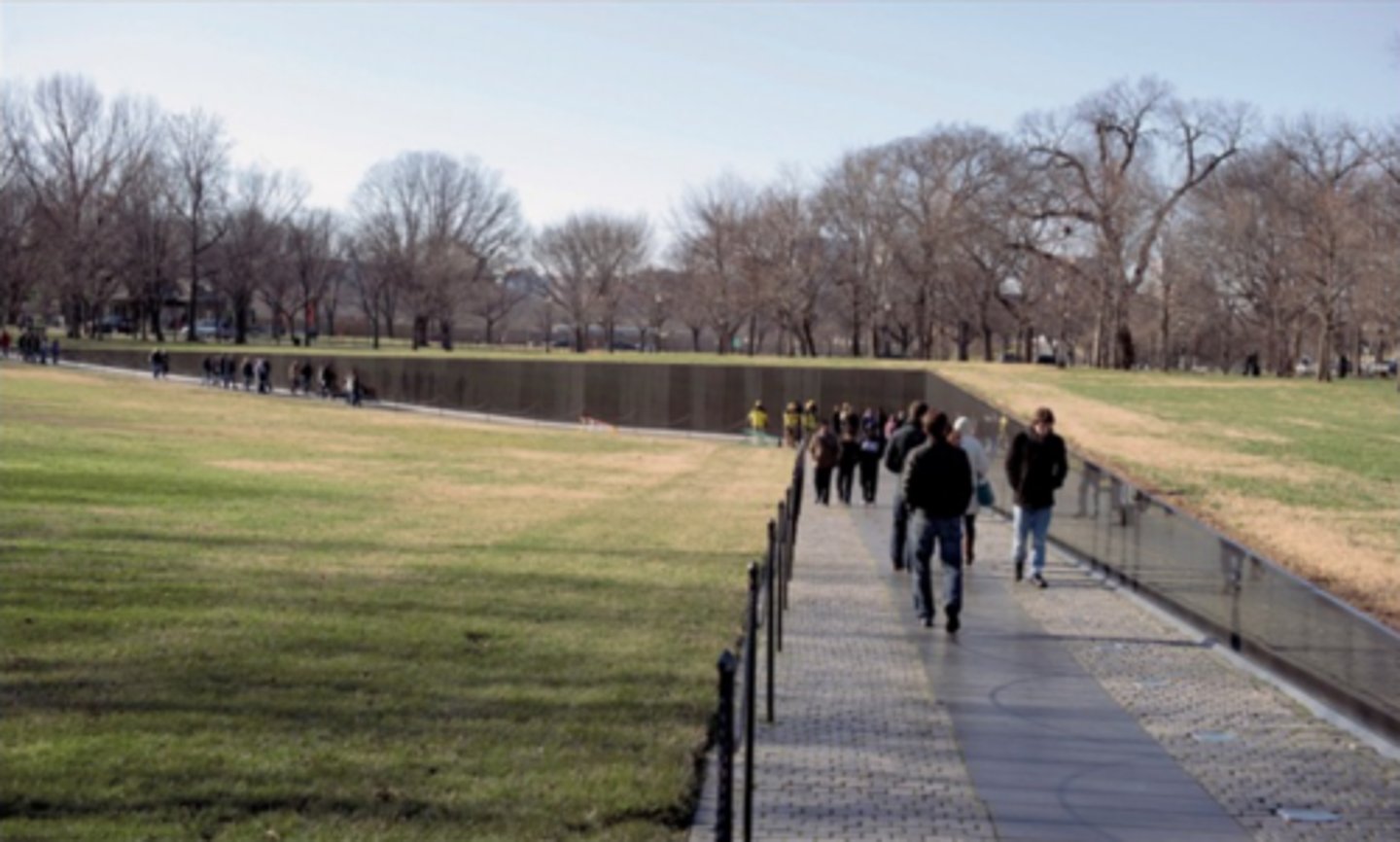
Jochen Gerz and Esther Shalev-Gerz, Monument Against Fascism, 1986, galvanized steel with a lead coating
Issue(s): Fascism; Monument; interactive monument
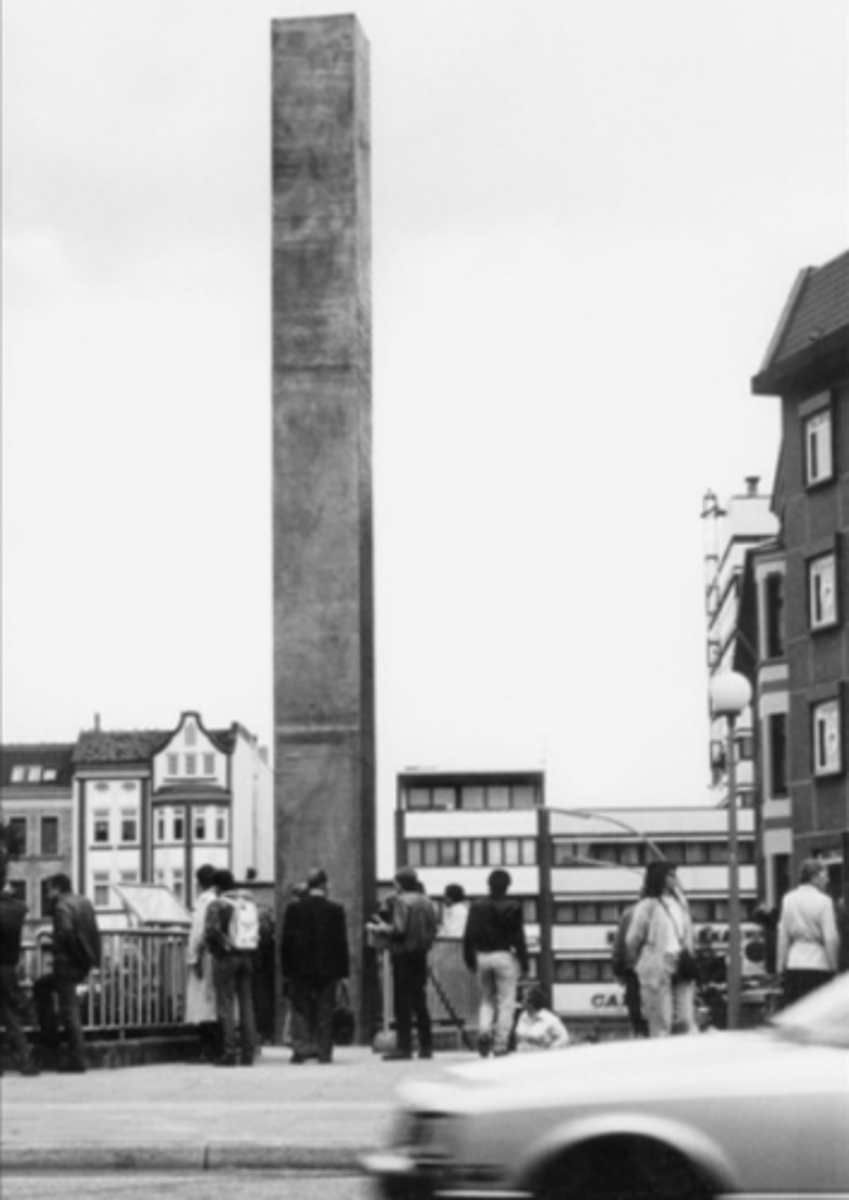
Ellsworth Kelly, Memorial, 1993, enamel on wood and composite in four parts,114 × 330 × 2", each of three panels 108x 64 × 2
Issue(s): monument; memorial; the Holocaust; triptych suggests a memorial to those who perished in the Holocaust, while the fan shape, placed higher on the wall than the three panels, suggests transcendence; flat-edge painting; relationship between figure and ground- figure is the shapes of the artwork and the ground is the wall
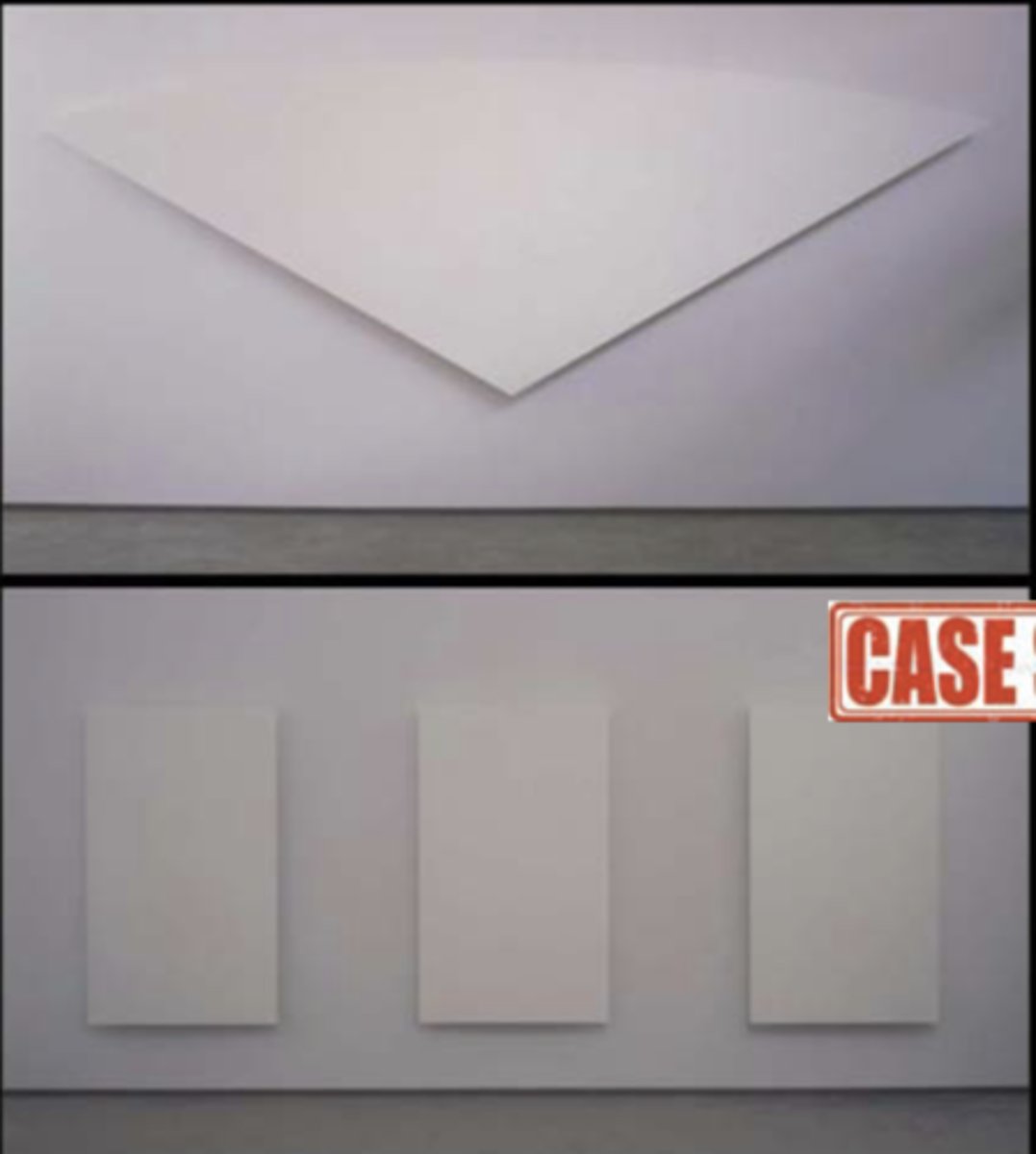
Rachel Whitehead, Holocaust Memorial,1995-2000
Issue(s): monument for the Viennese citizens who perished during the Holocaust; symbolism of the Jewish People as "people of the book" in there creation of a library; the Holocaust's impact on dismantling the structure of communities in Austria
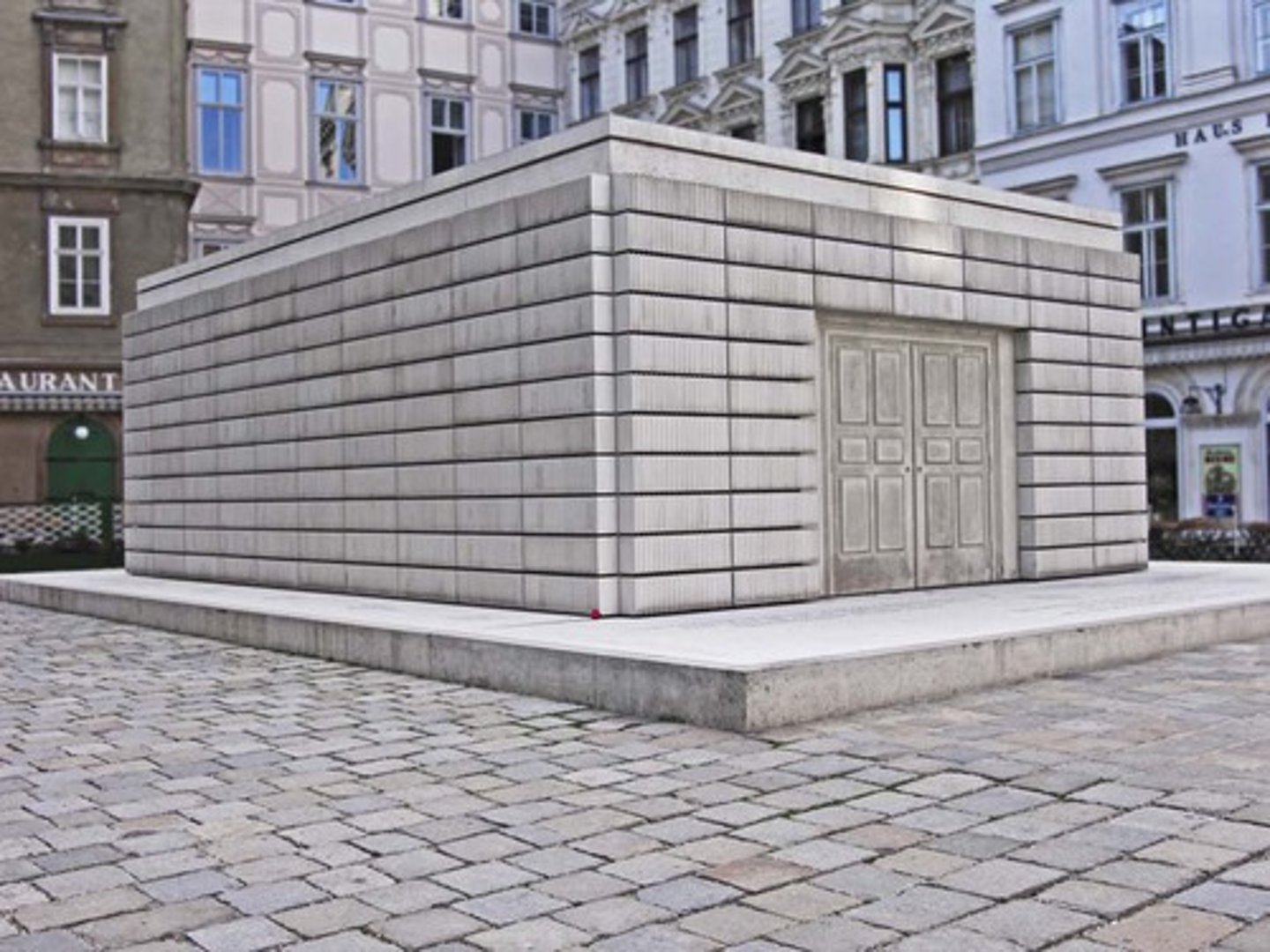
Nari Ward, Rites of Way, 2000, scaffolding, clear string, beads, paper installation view
Issue(s): memorial; addresses current and lost places in Minneapolis-St. Paul's local, historical memory; addresses lost communities; references ice fishing huts and ice castles; collaborative work that included objects and stories from residents of Minneapolis-St. Paul

Whitfield Lovell, Whispers from the Walls, 1999, installation view, charcoal on wood with found objects
Issue(s): memorial; broadens narratives of historical memory; provides a dignified and more accurate understanding of African American life between the end of the Civil War and the start of the Civil Rights Movement; installation that draws on historical photographs

Fred Wilson, Cabinet Making 1992-93, Whipping post, two armchairs
Issue(s): Advocating for more perspectives in curatorial practices; institutional critique; addressing power dynamics in museum practices; identity
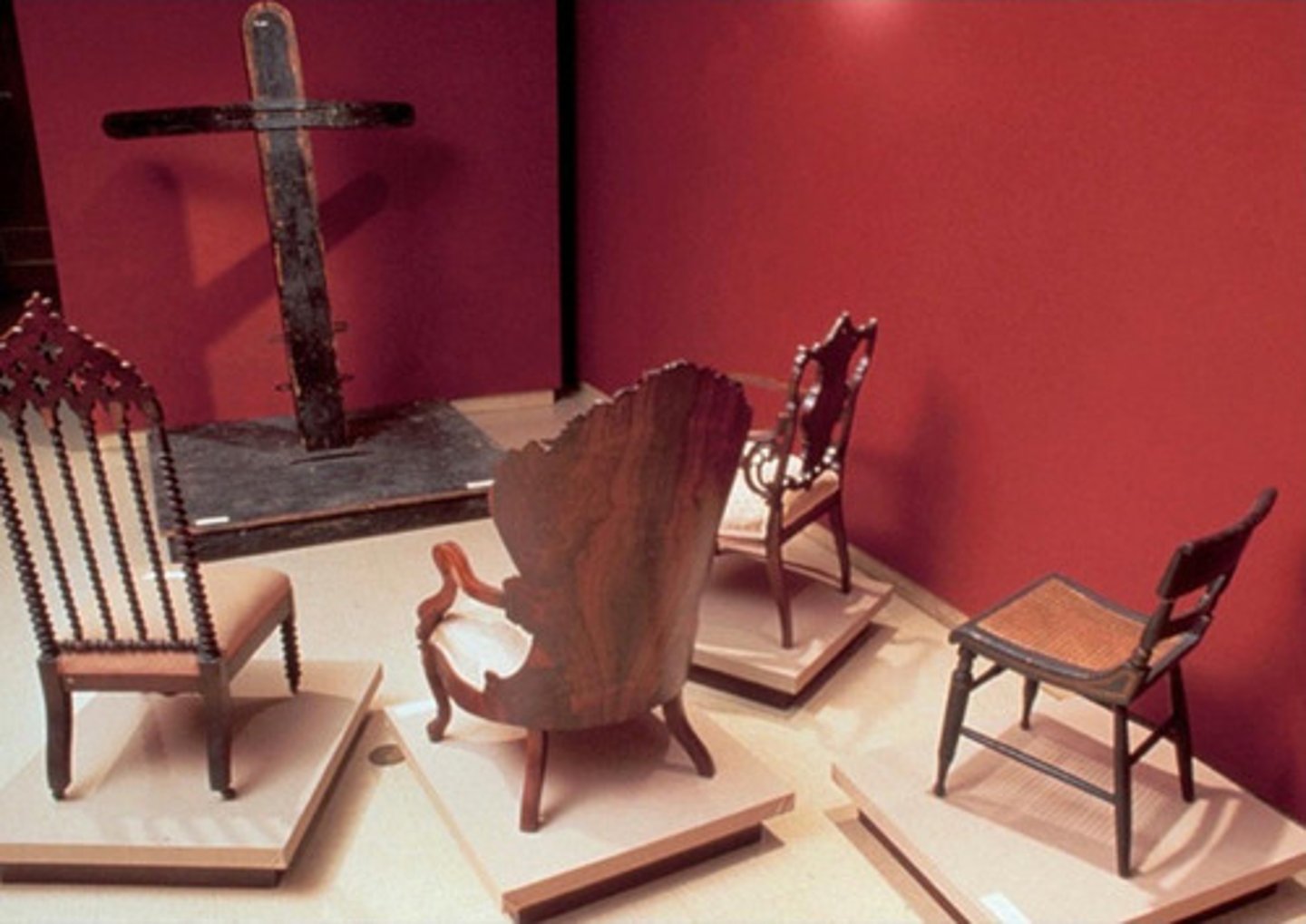
Andres Serrano, Immersion (Piss Christ), 1987, cibachrome print
Issue(s): Culture Wars; artist's intention vs. reception - artist contends this is a more truthful representation of the Crucifixion vs. some critics, politicians, and viewers understanding the works a blasphemous; critique of mass consumption and commercialization of religious objects and symbols

Sally Mann, New Mothers from Immediate Family series, 1989, gelatin silver print
Issue(s): Identity; social expectation related to the roles of mother and children; distinctions between public and private art
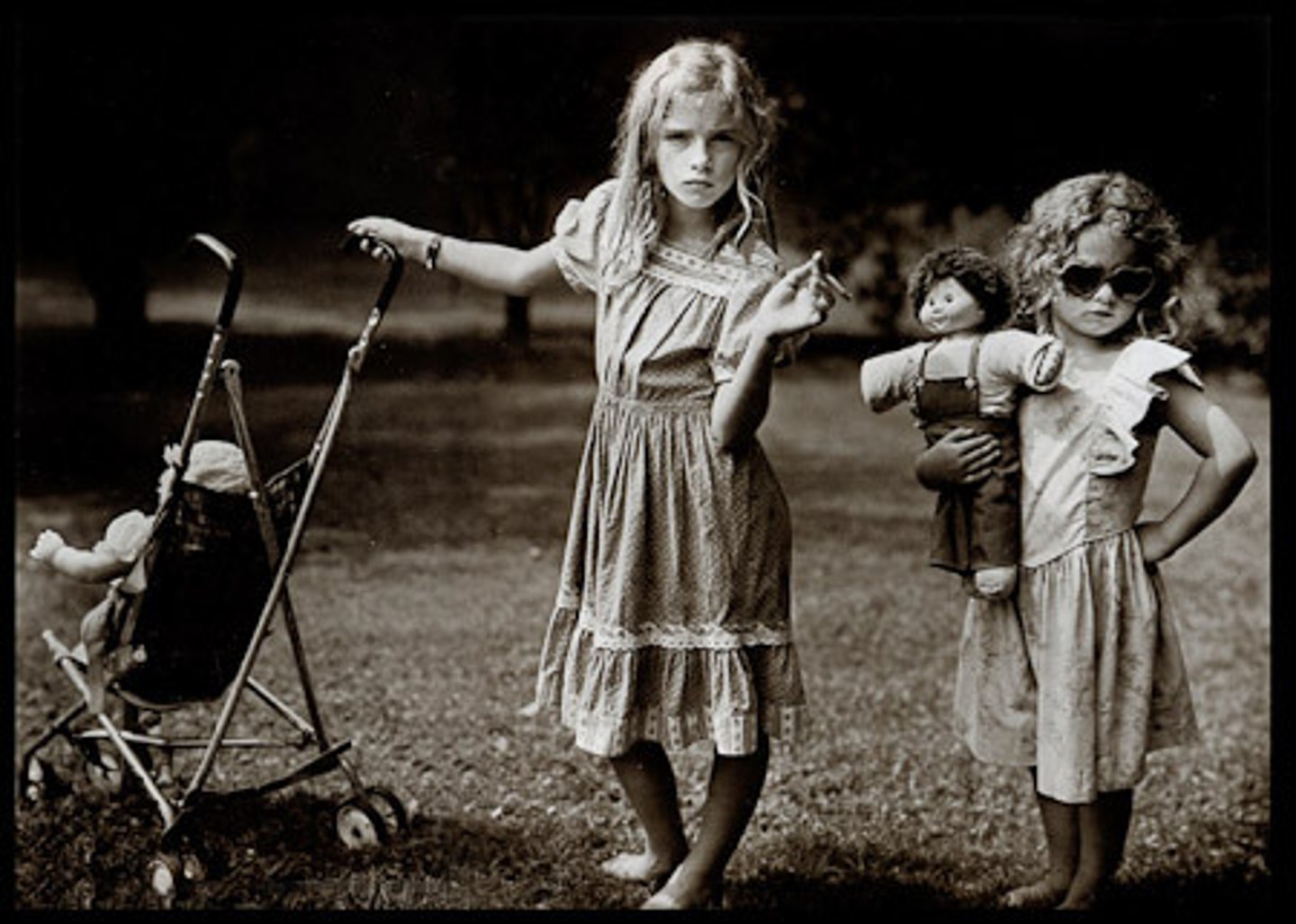
Ana Mendieta, Untitled from Siluetas (Silhouette series), 1977, color photograph,
Issue(s): Body Art; identity; absence and presence; addresses the artist's displacement from her home to Iowa due to the Cuban Revolution; boundaries of the female body; Santéria and the spiritual connection between the human body and earth
snow version of this pic

Adrian Piper, Catalysis IV, 1970, performance documentation notebook: two silver gelatin prints and typescript
Issue(s): Identity; societal perceptions of gender and race; confronting racial biases in society; performance art

Ilya Kabakov, The Man who Flew into Space from His Apartment, 1985-89. Installation from Ten Characters series. Six poster panels with collage, furniture, clothing, catapult, household objects, wooden plank, scroll type painting, two pages of Soviet paper, diorama
Issue(s): false promises of communism; objective depiction of life in the USSR vs. Socialist Realist presentations of living in the Soviet Union; non-art; total installation garbage as holding historical memories; rejection of Socialist Realism; Moscow Conceptualism
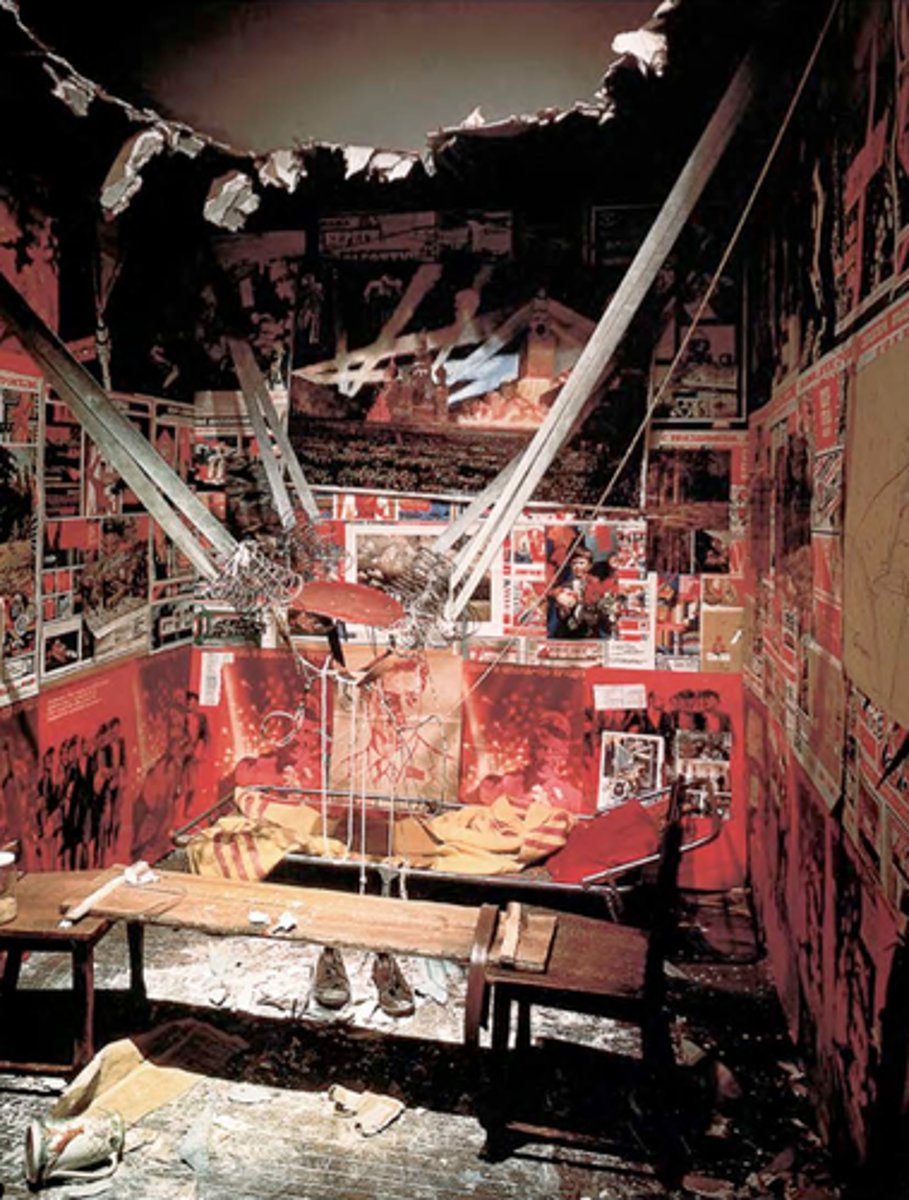
Vitaly Komar and Aleksandr Melamid, Origin of Socialist Realism, 1982-83, oil on canvas
Issue(s): Sots Art; confronting false depictions of communism in Socialist Realist art
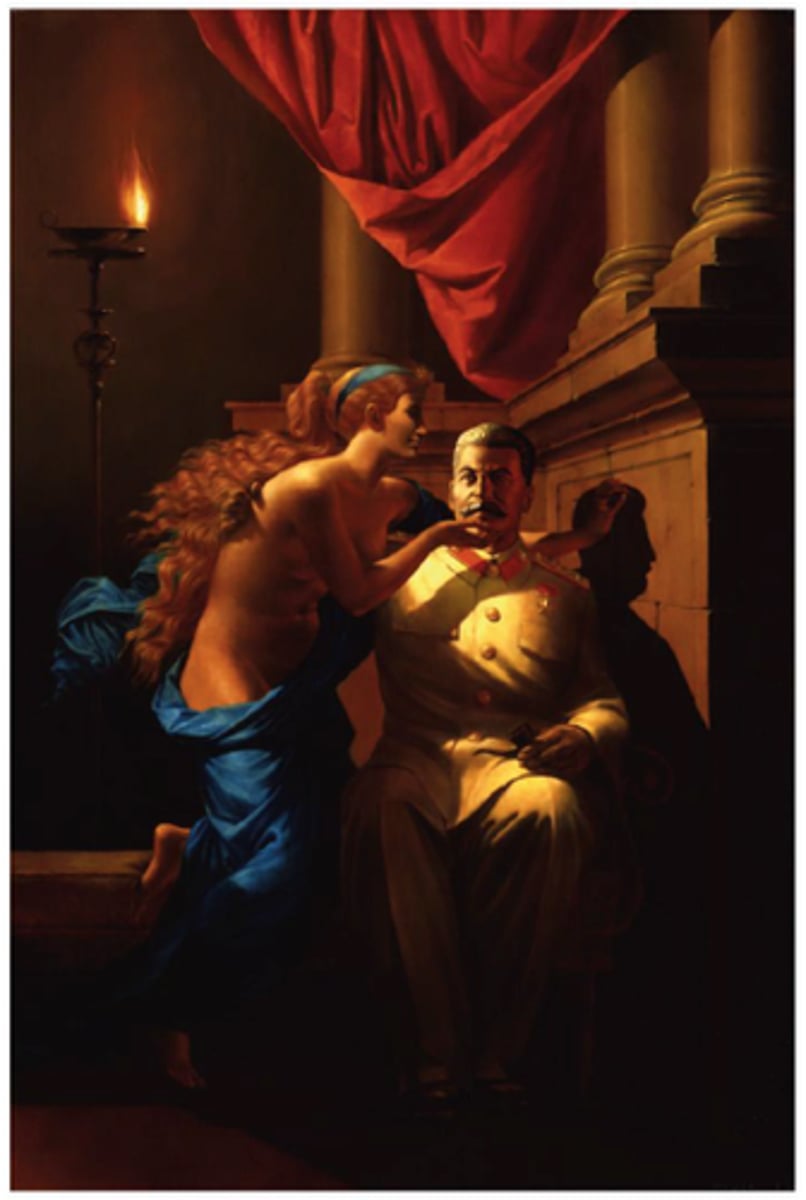
Erik Bulatov, Perestroika, 1989, oil on canvas
Issue(s): Sots Art; false promises of communism and distrust of Gorbachev's reform in perestroika

Wang Guangyi, Frozen North Pole no.28,1985, oil on canvas
Issue(s): Rationalist Art; The Northern Arts Group; looking toward an unknown future in China

Wang Guangyi, Great Criticism-Coca Cola, 1990-93, oil on canvas
Issue(s): Political Pop; combines artistic elements from East and West - Warhol's imagery and past artistic practices in China in the twentieth century (Batou books, Socialist Realism, and calligraphy); red and yellow symbolism in current and historical China - red -communism, red books, luck - yellow -stars on China's flags, color associated with imperial leaders; addresses the combined communist and capitalist practices in China due to Deng Xiaoping's changes to the country

Zhang Xiaogang, Bloodline: Big Family No. 9 (red baby), 1996, oil on canvas
Issue(s): addresses the collective trauma of the Cultural Revolution; idea of the nation as a unified family in communist China; conformity in community China; inspired by photography and Surrealist ideas such as the uncanny; bloodline connects all figures
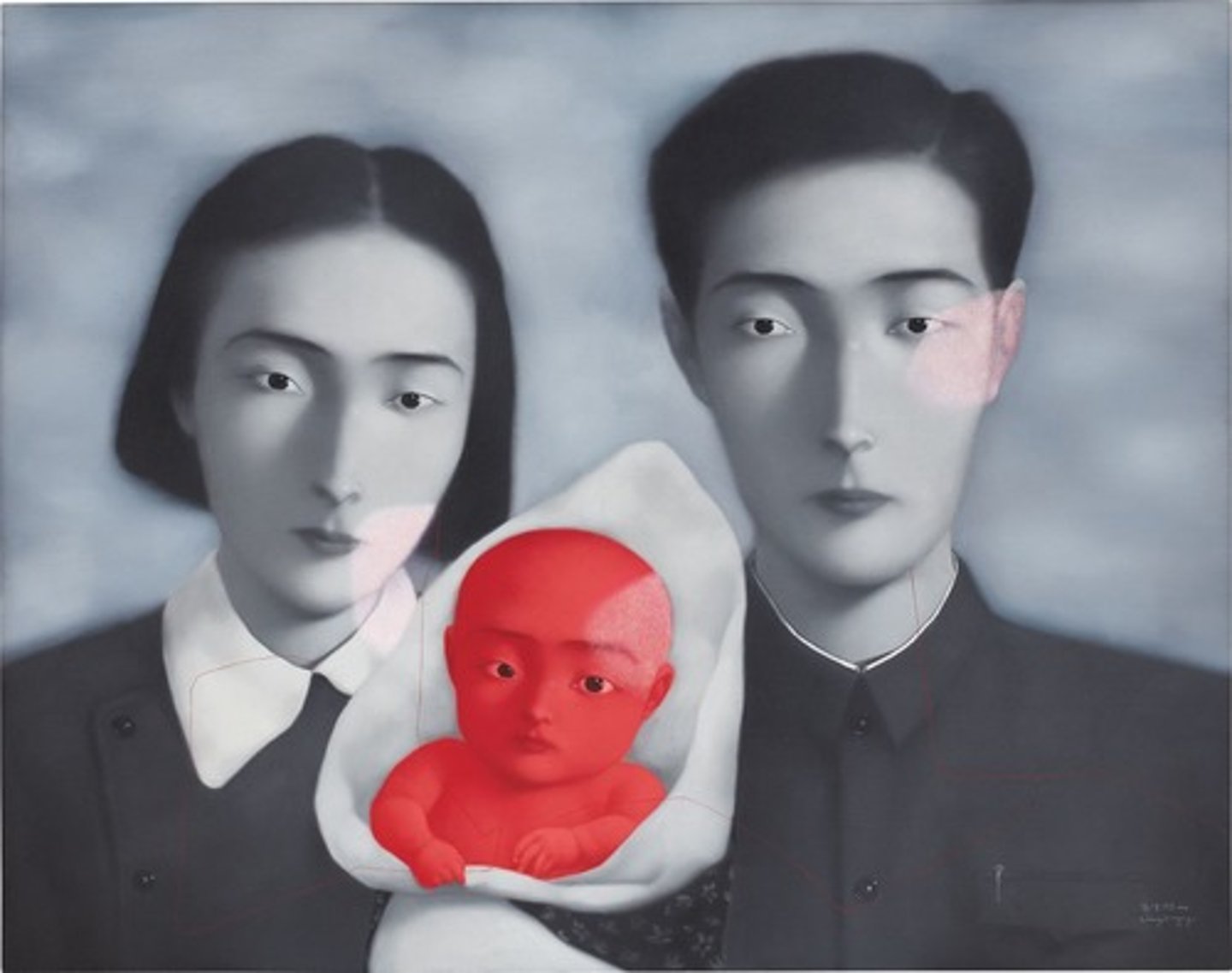
Zhang Huan, To Raise the Level of a FishPond,1997, Performance consisting of approximately forty workers walking into a lake
Issue(s): futility of organized collective action in communism; criticism of communism; artist's nostalgia for his youth and home; performance art
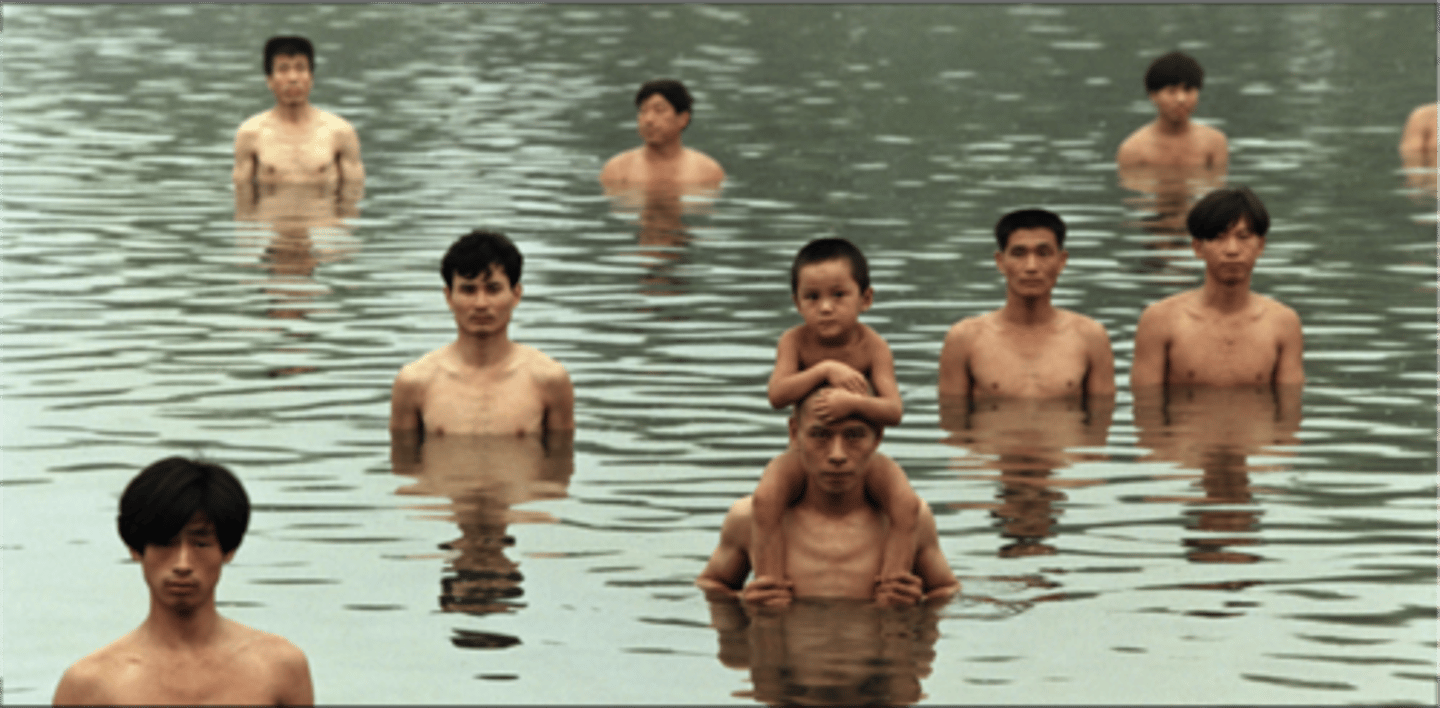
Juan Elso, Por América (For America),1986, carved wood, plaster, and earth
Issue(s): study of revolutionary ideals; Afro-Cubanism and Santéria; merging kitsch and colonial religious sculptures; reference to José Martí's ideals of an autonomous American government and culture

José Bedia, The Island That Died, 1996, acrylic on canvas
Issue(s): Palo Monte; leaving and returning to Cuba; the impact of the fall of the USSR on Cuba

Shahzia Sikander, Pleasure Pillars, 2001, vegetable color, dry pigment, watercolor, ink, and tea on wasli paper
Issue(s): narrative; identity; addresses the cultural and political tension between the East and West, especially in the immediate aftermath of 9/11

Takashi Murakami, Tan Tan Bo Puking-a.k.a. Gero Tan, 2002, acrylic on canvas mounted on board
Issue(s): Superflat; identity; use of kitsch; effect of WWII on Japanese culture; alter-ego of the artist; cultural tensions between the East and West
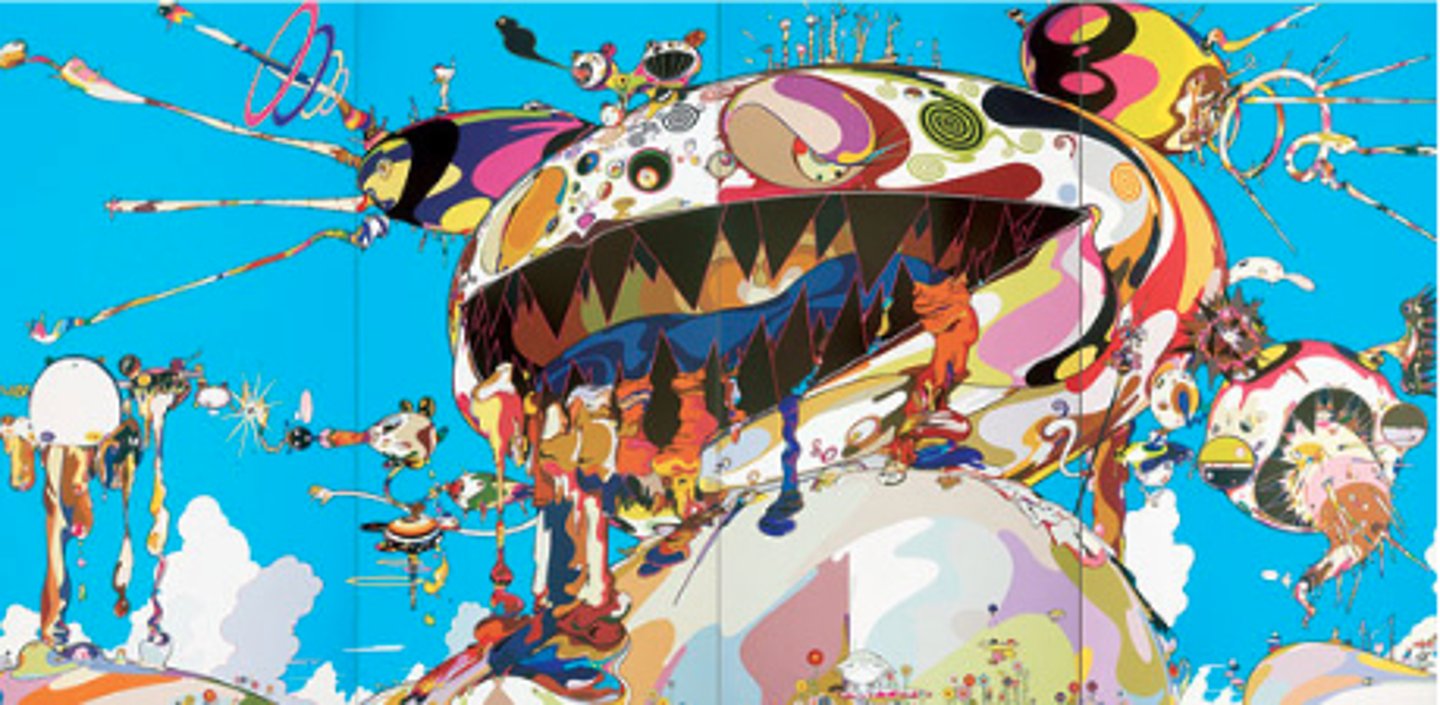
Cecily Brown, Night Passage, 1999, Oil on linen
Issue(s): narrative; allusions to artists who reference other artist's works; vacillations between abstract and figurative painting; sexualized painting process and subject matter; painterly approach and use of impasto
